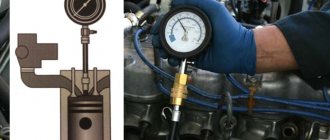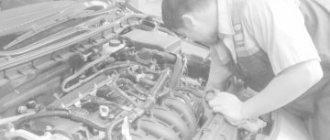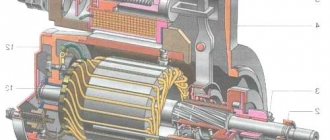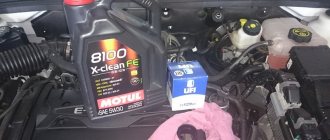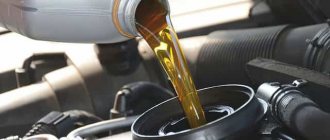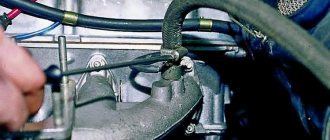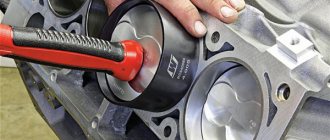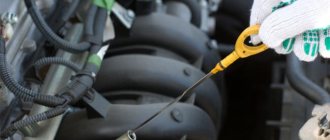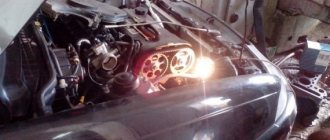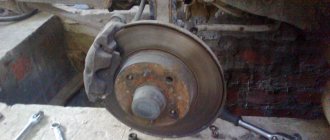Additives and oil as a way to restore engine compression
How to increase compression in a car engine is, of course, up to the master to decide. However, there are a number of reasons why it is decreasing. And it is quite possible to eliminate some of these reasons on your own. You just need to be able to correctly determine what exactly the problem is. To do this, you need to be able to measure the compression correctly, according to strict canons, in order to understand why there was a need to increase it...
Types and properties of engine additives to increase compression
After using the car for a long time, owners notice a deterioration in engine performance. Mostly domestic cars are subject to changes, the engine capacity of which is from 1300 to 1500 cm³. Over time, noise appears, starting deteriorates, and power drops, regardless of the quality of the fuel and oil used. The main reason for the deterioration of engine performance is a drop in compression. This can be prevented by using supplements. Using an engine additive to increase compression helps. They work on a similar principle, but differ in composition. First, let's look at the reasons for the drop in compression in the engine.
Non-mechanical damage
They are usually observed after poor-quality repairs. Inexperienced craftsmen set the valve timing incorrectly. When viewing, it is noticeable that the valves are closing, but this is not happening at the right time. They remain slightly open during the compression stroke. This is quite enough for air to escape, but the displacement is small. Therefore, the valves do not contact the piston. Another common reason is coking and sticking of the rings. It turns out that the compression valve fits into the grooves. The seal is lost and gas passes through. At the same time, the oil scraper rings continue to work, and the oil does not seal the cracks. When working properly, it is washed off with unburned fuel, but in this case it is simply removed with rings.
What and how to measure compression
As noted above, measuring compression is a simple operation, and it can easily be performed in a garage.
But for this you need a special measuring device - a compression meter.
In fact, this is a regular pressure gauge, equipped with a check valve, as well as an extension cord for ease of diagnostics (the kit may also include attachments for working with different power plants).
In addition to this, the device will also require a spark plug wrench. You won’t be able to diagnose it yourself, so you also need an assistant.
Let's look at how compression measurements are made using the example of a VAZ Kalina car.
The sequence of actions for diagnostics is as follows:
- Warm up the engine to operating temperature;
- We relieve the pressure in the fuel rail (pull out the fuel pump fuse, and then start the engine again so that it produces the remaining gasoline in the rail);
- We remove the tips of the spark plugs, as well as from the ignition module;
- We unscrew all the spark plugs;
- We install a compression gauge in the spark plug hole of the cylinder;
- We ask the assistant to press the gas pedal all the way (this will ensure maximum air supply to the cylinder, which will make the readings more accurate), and then turn on the starter. In this case, to obtain correct data, it is necessary that all 4 strokes have passed in the cylinder being measured, that is, you need to turn the crankshaft at least 2 turns;
- Since the compression meter has a check valve, the device will record the maximum pressure value in the cylinder;
- We write down or remember the obtained pressure value, reset the readings and move on to the next cylinder.
After taking measurements in all cylinders, we compare the data. If the difference in readings does not exceed 1 kgf/cm2, put the spark plugs in place and continue operating the car.
Mechanical damage
The most common cause of mechanical damage is valve problems. They often burn, bend, and fall out. This happens due to the lack of normal mating of parts and gas breakthrough. There are several reasons why a valve can become bent. The most common one is belt rupture. Because of this, the valve meets the piston and is defeated in this unequal battle. Therefore, the belt should be changed on time.
Pistons are just as susceptible to damage as valves. For example, when refueling with low-quality gasoline, detonation occurs. The consequence of such a fuel change is the breakdown of the jumpers between the ring grooves. Piston rings can also break due to detonation. Driving without an air filter wears them out a lot and increases the gaps. If foreign objects get into the combustion chamber, then impacts on the piston are quite possible, which will lead to its deformation and slight destruction.
Additives help provide maximum protection for all components and increase compression in the engine. After we have become familiar with the reasons for the deterioration of engine performance, it is worth knowing the principle of operation of additives.
Lost compression in one cylinder reasons Auto news
Compression implies the maximum degree of pressure in the engine cylinders during the period of combustion of the flammable mixture. If there is no compression in 1 cylinder or many instantly, then this problem must be corrected immediately. What are the properties and prerequisites for reducing the degree of compression? You will see more details about this here.
Here are the most likely reasons for decreased compression:
- Cracks have appeared in the design of the exhaust valve, as well as this is due to engine wear;
- The exhaust hydraulic valve fits very loosely, which causes a leak due to the contact of the valve with the “seat”;
- The valve “seat” itself is completely destroyed or there are machine defects;
- The cylinder head gasket has burnt out. This could have happened due to wear and tear. In addition, a factor in gasket wear can be the penetration of contaminants into the surfaces of the gasket. In addition, the engine can go bankrupt as a result of engine overheating, which will later lead to cracks in the block or destruction of the cylinder head or the block itself;
- Due to overheating of the engine, a cylinder block may appear; the cylinder-piston category in your engine has been worn out; the inter-ring bridges of the piston have gone out of order, in which case they have fallen apart;
- In addition, the factor that there is no compression in 1 or 2 cylinders may be the output from the order of the intake valve; a rupture has occurred in 1 or many cylinders or in the pistons themselves; a profit has appeared on the oil seals and sealing piston rings, which reduces the influence in concepts; interruptions or disruptions occurred in the work of the gas distribution concept;
- Broken chain or strap of the gas distribution device. If, while moving in the car, the timing belt or timing chain has stopped working, then this could absolutely be a factor in this: the valves are bent;
- The valve has stopped closing or there is a huge gap before it closes. If the gap is very large, then the valves generally open little, which could be caused by incorrect settings or wear of components. In addition, if there is little atmosphere in one or a row of cylinders, you will hear a knocking sound near the valve tires.
One thing is important - do not delay solving this problem, and look for a solution as quickly as possible!
How additives work
Compression additives work on a similar principle. First of all, they are catalysts that accelerate crystallization on engine surfaces. When added, a protective film is formed on the rubbing parts, which reduces the load on the power unit. The use of additives helps restore the crystal lattice of metal parts. When disassembling a motor that worked with the addition of an additive, it is clear that all components have a smooth mirror surface. As a rule, additives are used to increase the compression of the internal combustion engine after 60 thousand kilometers. This allows you to save all components from wear. Motorists highlight the following advantages of using the additive:
- aligning and increasing cylinder compression;
- increase in oil pressure;
- elimination of coking.
Another undeniable plus is the delay in major car repairs. There is also a noticeable slight reduction in fuel costs, which has a positive effect on savings over long service life. So, we have become familiar with the principle of operation, now we need to figure out what types of additives there are.
What is the difference between compression ratio and compression?
You can theorize for a long time, explaining the difference between compression and compression ratio, give formulas, scientific calculations, but there won’t be much benefit from all this nonsense. For an ordinary, let's say, ordinary user of car engines, the compression ratio is not that important. This is a design parameter, it is laid down when the engine is created and remains unchanged until certain changes are made to this engine. This is, for example, boosting the engine, major repairs, and so on. But all this, as a rule, is done by experienced craftsmen, and therefore taking into account the degree of compression is already their headache. Let's just say that the compression ratio is the ratio of the volume of the combustion chamber to the total volume of the cylinder. Essentially, this or that compression ratio value tells us how many times the air-fuel mixture will be compressed in this particular engine model.
As for compression, during operation this indicator can change significantly. It shows the real working pressure in the cylinder, and it, as a result of wear of the piston group, malfunctions of the valves, problems with the tightness of the engine head gasket and other parts, can vary significantly
Hence the much greater importance of compression for the car owner or specialist repairing this car.
Types of additives to increase engine compression
There are several types of engine additives to increase compression and reduce wear of parts. They all have both their advantages and disadvantages. These additives differ from each other in the main active substance. For clarity, let’s distribute them in a table:
| Type of additive | pros | Minuses |
| Remetallizants |
|
|
| Containing Teflon |
|
|
| Air conditioners |
|
|
| Modifiers |
|
|
| Geomodifiers |
|
Now let's take a closer look at each type of additive:
- Remetallizants are additives that contain ions of one of the metals: copper, tin, cadmium. During operation, a protective coating is formed on the surface of the engine components. Most often used by motorists as an additive to increase the compression of a gasoline engine. Example of a remetallizant
- Teflon containing additives are additives that use Teflon as the main substance. The material is not cheap and is susceptible to the negative effects of high temperature. Because of this, it is not used as often.
- Air conditioners are made using complex compounds of chlorine and paraffin. They are able to break down wear products. The protective coating is formed due to the addition of fluorinated polyesters to the composition. Due to its high toxicity, it is also rarely used. Air conditioner example
- Modifiers – are made using molybdenum, tungsten and graphite. All components form a layered coating of parts, which reduces friction, thereby increasing service life. Often used as additives to increase diesel engine compression.
- Geomodifiers are additives in the production of which serpentine, graphite, magnesium, and forsterite are used. During operation, a complex chemical reaction is launched, the result of which is the formation of a composite layer. Due to the fact that the composition of the protective film is as close as possible to the crystal lattice of metals, it is the most wear-resistant product. But the use is limited by the fact that the engine must have aluminum liners produced by Nikosil.
Knowing all types of additives is not enough. It is important to know how to use them correctly. Therefore, next we will analyze the rules of application.
We restore compression without major repairs
How to increase the octane number in gasoline
In most cases, major disassembly and repairs are not required to restore the normal functioning of the part. There are a number of substances that help to achieve high-quality restoration with minimal effort and energy.
Restoration using special additives
I think every driver has heard more than once about the miraculous effect of automobile additives that help restore former power and reduce oil consumption. Also, everyone has heard that these remedies are absolutely ineffective. In reality, the truth lies somewhere in the middle.
Video – compression restoration:
To be fair, it should be said that in the 90s, at the peak of the popularity of additives, many low-quality fakes appeared on the market that did not help restore engine compression. But it also cannot be denied that leading manufacturers of fuel and lubricants still produce additives and position them as means for restoring key components of a car.
High-quality additives ensure the restoration of worn areas of metal on engine parts, thereby increasing compression. The thickness of the protective layer is minimal, but it is more than enough to patch up time-worn areas. Of course, this greatly contributes to the restoration of compression.
Removing carbon deposits
To free O-rings that have carbon deposits on them, you can use an old, proven method that drivers have been using for many years.
The fact is that due to low-quality fuel, microparticles remain on the internal components of the car. They significantly prevent the restoration of normal compression.
Attention! Due to microparticles accumulating on the piston rings, compression drops. To restore this defect, you can use clean engine oil. It must be poured through the engine spark plug socket
One hundred grams is enough to carry out the restoration. After this, just leave the engine for half an hour. Clean motor oil will remove the fumes. Typically, after this procedure, restoration of compression is observed almost instantly. The rings, cleared of soot, will perform their task properly
It needs to be poured through the engine spark plug socket. One hundred grams is enough to carry out the restoration. After this, just leave the engine for half an hour. Clean motor oil will remove the fumes. Typically, after this procedure, restoration of compression is observed almost instantly. The rings, cleared of soot, will perform their task properly.
Restoring engine compression is quite possible without major repairs. Moreover, to carry out this procedure, 100 grams of pure oil is enough, which can be bought at any specialized store. You can also use special additives, but first you need to conduct a quality diagnosis.
The video shows compression restoration after flushing the engine:
- Winches for cars
- Do-it-yourself homemade engine preheater
- How to decarbonize piston rings
- How to heat the oil in the crankcase
How to use it correctly
The final result depends on the correct use of additives to restore compression. There are a few simple rules to follow when adding the product to your engine.
- The additive is poured into the engine only when changing the oil. There is no need to add additives to already used oil.
- Before adding, be sure to read the instructions on the package. All manufacturers describe dosages in detail. You can deviate from the recommendations, but not much.
Important! Do not overuse additives. Add them no more often than indicated in the instructions for use. The basis of the work is chemical reactions, and the rule “the more, the better” does not apply here. Improper use leads not only to deterioration of performance, but also to breakage of parts.
We hope that now you understand how to increase the compression in the engine and also increase the life of the car.
Reasons for decreased or lost compression
An aggressive driving style, as well as improper maintenance of the “iron horse” can lead to various malfunctions of its operation. The reasons for the decrease in pressure inside the cylinders are often caused by negligence towards your vehicle and can be the following:
- a dirty air filter makes it difficult to create a fuel-air mixture, which automatically reduces compression;
- constant overheating leads to scoring on the pistons and cylinders, and in worst cases the pistons can burn out;
- rupture of timing belts (gas distribution mechanism) often leads to valve deformation;
- errors when installing the camshaft according to marks during repair;
- malfunction of the gas distribution system;
- If there is excessive load on the engine during vehicle operation, increased wear of the piston rings occurs, and the cylinder head gasket (cylinder head) may also burn out. In addition, cylinder head cracks also lead to leaks and a decrease in pressure inside the engine cylinders;
- Incorrect valve adjustment leads to air supply disturbances and, as a result, a decrease in compression.
All these problems are accompanied by a loss of compression inside the power unit, both in one and in all cylinders.
